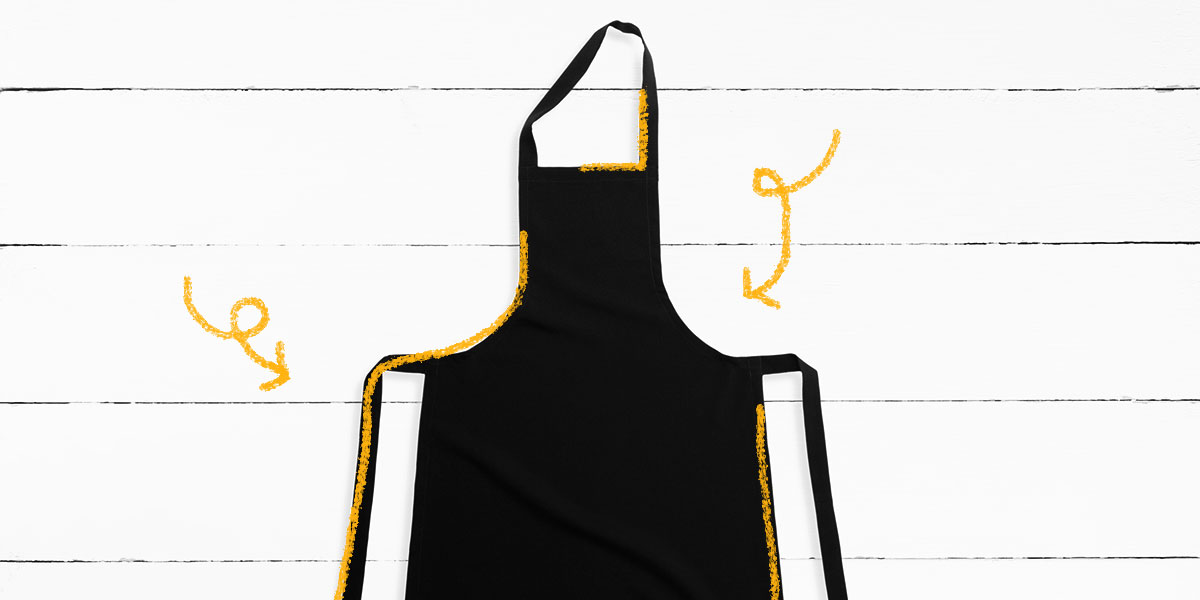Since ancient times, aprons have been worn for practical, decorative, and ritualistic purposes. The name comes from the French word for a small tablecloth, naperon. There are many different styles of aprons, from the half apron to the full bib style. In times past, little girls often wore pinafore aprons to protect their dresses (think Raggedy Ann or Alice from Alice in Wonderland). In ancient Crete and Egypt, aprons were worn as symbols of status and during rituals. During the Middle Ages in Europe, aprons were worn by homemakers, tradesmen, and artisans. Colors and patterns even correlated to certain professions – English barbers wore checkered aprons, stonemasons wore white aprons, cobblers wore black aprons, butchers wore blue stripes, and solid blue was often worn by weavers, spinners, and gardeners. In the Americas, Native Americans often wore aprons for both practical and ceremonial purposes, while colonists wore aprons to protect their clothing. The apron is perhaps most heavily associated with the 1950s American housewife. During that time, it became a symbol of family, motherhood, stability, and abundance following the horrors of the Great Depression and the World Wars. There were plain, practical aprons for everyday use as well as sheer or ruffled aprons for wearing over dresses during hostess duties. Many mass-produced aprons were printed with kitchen themes like pots, toasters, or spoons. Homemade aprons were also very popular at the time. In the 1960s, the idealization of housework fell out of favor as women began to reach outside the home for fulfillment, and the apron lost its popularity. However, it was still used as a protective garment in many professions. In fact, waiters, barbers, butchers, artisans, and even X-Ray technicians regularly wear aprons made from a variety of materials (think cloth, leather, and lead) to this today. In recent years, apron-wearing at home has also made a comeback, in part due to a revived interest in home cooking as well as the popularity of crafting and an interest in styles from the past.

Your go-to guide for weird history facts
Subscribe to the FREE daily email that makes learning about history fun.


